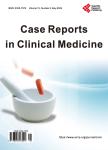Acute Pulmonary Embolism, Multiple Coronary Thrombosis, and Thrombi in the Left Ventricle and Ascending Aorta in a Patient with COVID-19 Infection
Acute Pulmonary Embolism, Multiple Coronary Thrombosis, and Thrombi in the Left Ventricle and Ascending Aorta in a Patient with COVID-19 Infection作者机构:Hospital Clínico San Carlos Madrid Spain Complejo Universitario de Cáceres Caceres Spain
出 版 物:《Case Reports in Clinical Medicine》 (临床医学病理报告(英文))
年 卷 期:2021年第10卷第10期
页 面:314-322页
学科分类:1002[医学-临床医学] 100201[医学-内科学(含:心血管病、血液病、呼吸系病、消化系病、内分泌与代谢病、肾病、风湿病、传染病)] 10[医学]
主 题:COVID 19 Infection Pulmonary Embolism (PE) ST-Segment Elevation Myocardial Infarction (STEMI) Intracoronary Thrombosis Intra-Aortic Thrombus
摘 要:Both arterial and venous thromboembolic events are common in patients hospitalized in intensive care units with severe COVID-19. These patients often have laboratory findings consistent with a hypercoagulable state, suggesting widespread thrombosis and fibrinolysis, as well as elevated levels of D-dimer, von Willebrand factor (VWF), and factor VIII. There is increasing evidence that these thromboembolic events are associated with worse outcomes. We present the case of a 61-year-old man admitted for bilateral pneumonia due to COVID-19 infection, who developed during his hospitalization;Bilateral pulmonary thromboembolism, an acute myocardial infarction due to multiple coronary thrombosis, an intracavitary thrombus and thrombus in the ascending aorta. The patient was treated with systemic fibrinolysis and full doses of anticoagulation for pulmonary embolism, an emergency primary percutaneous coronary intervention (PCI) was performed with the implant of a drug eluting stent (DES) in the left anterior descending artery (LAD). Triple therapy with aspirin, clopidogrel and heparin was maintained until discharge. After the patient discharge, aspirin was stopped and treatment with clopidogrel and dabigatran was maintained for three months. In a subsequent outpatient control, the thrombi of the left ventricle and the ascending aorta resolved.



